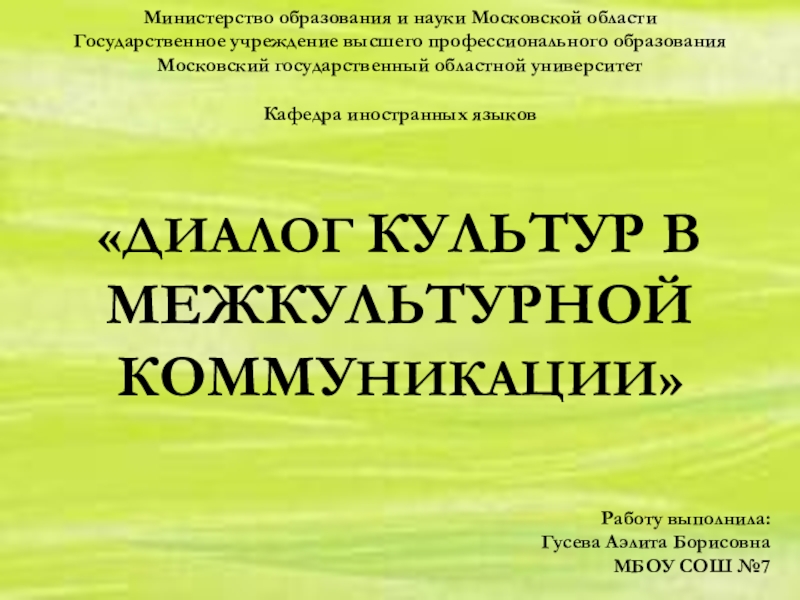07.02.1812 – 09.06.1870
- Главная
- Разное
- Образование
- Спорт
- Естествознание
- Природоведение
- Религиоведение
- Французский язык
- Черчение
- Английский язык
- Астрономия
- Алгебра
- Биология
- География
- Геометрия
- Детские презентации
- Информатика
- История
- Литература
- Математика
- Музыка
- МХК
- Немецкий язык
- ОБЖ
- Обществознание
- Окружающий мир
- Педагогика
- Русский язык
- Технология
- Физика
- Философия
- Химия
- Шаблоны, фоны, картинки для презентаций
- Экология
- Экономика
Презентация, доклад по английскому языку 10 класс Чарльз Диккенс
Содержание
- 1. Презентация по английскому языку 10 класс Чарльз Диккенс
- 2. AcquaintanceCharles John Huffem Dickens - English writer,
- 3. BiographyCharles Dickens was born February 7, 1812
- 4. However, at the insistence of his mother,
- 5. Literary Activity Dickens found himself primarily
- 6. A dizzying success awaited Dickens in the
- 7. After traveling to America, where the public
- 8. Major worksNovels:Posthumous Papers of the Pickwick Club",
- 9. Christmas stories (The Christmas books): Christmas song (A
- 10. Trading House Dombi and Son, wholesale, retail
- 11. Great Expectations, December 1860 - August 1861.Our
- 12. Collected stories:"Sketches by Boz" (Sketches by Boz),
- 13. The endThank you for watching.
AcquaintanceCharles John Huffem Dickens - English writer, novelist and essayist. The most popular English-speaking writer during his lifetime. Classic of world literature, one of the largest prose writers of the XIX century. Creativity of Dickens is
Слайд 2Acquaintance
Charles John Huffem Dickens - English writer, novelist and essayist. The
most popular English-speaking writer during his lifetime. Classic of world literature, one of the largest prose writers of the XIX century. Creativity of Dickens is attributed to the heights of realism, but in his novels the sentimental and fabulous beginning were reflected. The most famous novels of Dickens: ”The Posthumous Notes of the Pickwick Club”,” Oliver Twist”, “Nicholas Nickleby”, “David Copperfield”, ”The Cold House”, “The Tale of Two Cities”, “The Great Hopes”, ”Our Common Friend”, “The Mystery of Edwin Drood”.
Слайд 3Biography
Charles Dickens was born February 7, 1812 in the suburbs of
Portsmouth - Landport. He was the second child of eight children of John Dickens (1785-1851) and Elizabeth Dickens, born Barrow (1789-1863). His father served as an official at the naval base of the Royal Navy; In January 1815 was transferred to London, in April 1817 the family moved to Chatham. Here Charles studied at the school of the Baptist pastor William Gilles, even when the family moved to London again. Life in the capital, beyond its means, led his father in 1824 to a debt prison. His older sister continued to study at the Royal Academy of Music until 1827, while Charles worked at Warren's Blacking Factory, where he received six shillings a week. But on Sunday they also stayed in prison with their parents. A few months later, after the death of his grandmother on his father's side, John Dickens, thanks to his inheritance, was released from prison, received a pension in the Admiralty and a parliamentary reporter in a newspaper.
Слайд 4However, at the insistence of his mother, Charles was left in
the factory, which affected his attitude towards women in later life. After some time he was identified at Wellington House Academy, where he studied until March 1827. In May 1827, he was admitted to the law firm Ellis and Blackmore as a junior clerk, 13 shillings a week. Here he worked until November 1828. After studying shorthand by the system of T. Garnier, he began to work as a free reporter, along with his distant relative, Thomas Charlton. In 1830, Charles was invited to the Morning Chronicle. In the same year, Charles Dickens met his first love, Maria Bidnell - daughter of the bank's director. Later, he left her for Ellen Ternan, who later included in his will. Based on this story, Ralph Fiennes produced the film "The Invisible Woman" (2013). On June 9, 1870, Dickens, an eighty-eight-year-old, exhausted by colossal labor, a rather messy life and a lot of trouble, died of a stroke in his home Gadhill Place, located in the village of Hayam.
Слайд 5Literary Activity
Dickens found himself primarily as a reporter. As
soon as Dickens performed - on trial - several reporter tasks, he was immediately noticed by the reading public.
Literature - that's what was most important for him now.
The first manuscript sketches of Dickens, which he called "The Essays of Boz", were printed in 1836. Their spirit fully corresponded to the social position of Dickens. This was, to some extent, a fictional declaration of the interests of the ruined petty bourgeoisie. Psychological sketches, portraits of Londoners, like all Dickensian novels, also first appeared in the newspaper version and already brought the young author enough glory.
Literature - that's what was most important for him now.
The first manuscript sketches of Dickens, which he called "The Essays of Boz", were printed in 1836. Their spirit fully corresponded to the social position of Dickens. This was, to some extent, a fictional declaration of the interests of the ruined petty bourgeoisie. Psychological sketches, portraits of Londoners, like all Dickensian novels, also first appeared in the newspaper version and already brought the young author enough glory.
Слайд 6A dizzying success awaited Dickens in the same year as the
chapters of his "Posthumous Papers of the Pickwick Club" were published. In this novel he paints old England from the most diverse aspects of it, admiring her good nature and the abundance of living and sympathetic traits inherent in the best representatives of the English petty bourgeoisie. All these features are embodied in the good-natured optimist, the noblest old eccentric Mr. Pickwick. This novel of Dickens caused an extraordinary burst of reader interest. Two years later, Dickens came forward with "Oliver Twist" and "Nicholas Nickleby" 1838-1839. The glory of Dickens grew rapidly. His ally was seen in it and the liberals, because they defended freedom, and conservatives, because they pointed to the cruelty of new social relationships.
Слайд 7After traveling to America, where the public met Dickens with no
less enthusiasm than the British, Dickens wrote his "Martin Chuzzlewit" (1843).
In 1843, the Christmas Carol was released, followed by The Chimes, The Cricket on the Hearth, The Battle of Life, The Obsessed "(The Haunted Man).
At the same time, Dickens became editor-in-chief of the Daily News. In this newspaper he was given the opportunity to express his socio-political views.
In 1843, the Christmas Carol was released, followed by The Chimes, The Cricket on the Hearth, The Battle of Life, The Obsessed "(The Haunted Man).
At the same time, Dickens became editor-in-chief of the Daily News. In this newspaper he was given the opportunity to express his socio-political views.
Слайд 8Major works
Novels:
Posthumous Papers of the Pickwick Club", published in monthly editions,
April 1836 - November 1837.
The Adventures of Oliver Twist, February 1837 - April 1839.
Nicholas Nickleby (The Life and Adventures of Nicholas Nickleby), April 1838 - October 1839.
The Old Curiosity Shop, weekly issues, April 1840 - February 1841.
Barnaby Rudge: A Tale of the Riots of Eighty, February-November 1841.
The Adventures of Oliver Twist, February 1837 - April 1839.
Nicholas Nickleby (The Life and Adventures of Nicholas Nickleby), April 1838 - October 1839.
The Old Curiosity Shop, weekly issues, April 1840 - February 1841.
Barnaby Rudge: A Tale of the Riots of Eighty, February-November 1841.
Слайд 9Christmas stories (The Christmas books):
Christmas song (A Christmas Carol), 1843.
The Bells
(The Chimes), 1844.
Cricket on the Hearth, 1845.
Battle of Life (The Battle of Life), 1846.
The man who was persecuted (The Haunted Man and the Ghost's Bargain), 1848.
Martin Chuzzlewit (The Life and Adventures of Martin Chuzzlewit), January 1843 - July 1844.
Cricket on the Hearth, 1845.
Battle of Life (The Battle of Life), 1846.
The man who was persecuted (The Haunted Man and the Ghost's Bargain), 1848.
Martin Chuzzlewit (The Life and Adventures of Martin Chuzzlewit), January 1843 - July 1844.
Слайд 10Trading House Dombi and Son, wholesale, retail and export trade (Dombey
and Son), October 1846 - April 1848.
David Copperfield (David Copperfield), May 1849 - November 1850.
Cold House (Bleak House), March 1852 - September 1853.
Hard times (Hard Times: For These Times), April-August 1854.
Little Dorrit Little, December 1855 - June 1857.
A Tale of Two Cities, April-November 1859.
David Copperfield (David Copperfield), May 1849 - November 1850.
Cold House (Bleak House), March 1852 - September 1853.
Hard times (Hard Times: For These Times), April-August 1854.
Little Dorrit Little, December 1855 - June 1857.
A Tale of Two Cities, April-November 1859.
Слайд 11Great Expectations, December 1860 - August 1861.
Our mutual friend (Our Mutual
Friend), May 1864 - November 1865.
The Mystery of Edwin Drood, April 1870 - September 1870. Published only 6 of 12 issues, the novel is not finished.
The Mystery of Edwin Drood, April 1870 - September 1870. Published only 6 of 12 issues, the novel is not finished.
Слайд 12Collected stories:
"Sketches by Boz" (Sketches by Boz), 1836.
"The Mudfog Papers" (The
Mudfog Papers), 1837.
"The Traveler is not on business" (The Uncommercial Traveler), 1860-1869.
"The Traveler is not on business" (The Uncommercial Traveler), 1860-1869.


















